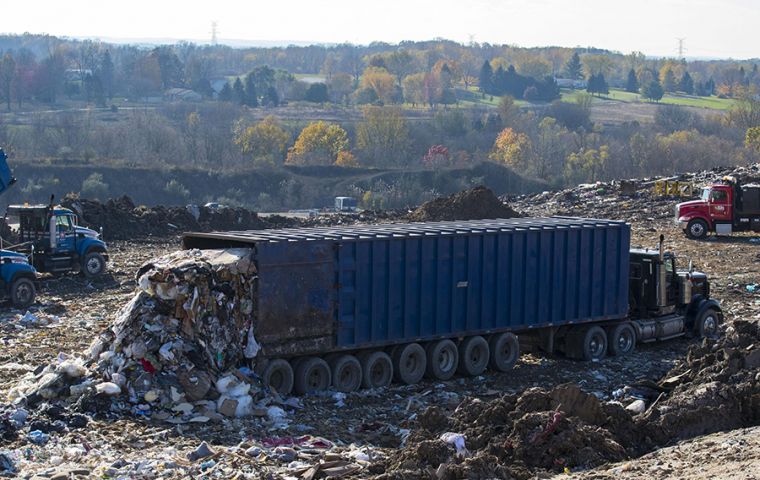MercoPress. South Atlantic News Agency
Atmospheric methane on the rise, NOAA warns
 A recent study pointed toward either natural wetland emissions or agriculture as the main cause for the increase in atmospheric methane
A recent study pointed toward either natural wetland emissions or agriculture as the main cause for the increase in atmospheric methane The National Oceanic and Atmospheric Administration (NOAA) of the US Department of Commerce has warned that the presence of methane reached new highs in 2021.
“Our data show that global emissions continue to move rapidly in the wrong direction,” NOAA director Rick Spinrad said in a statement.
Methane is the second-largest contributor to global warming, after CO2. Its duration in the atmosphere is shorter (about 10 years) than that of CO2, but its warming power is much greater. Around 30% of methane emissions are related to fossil fuel production.
According to NOAA, in 2021 the increase in methane levels in the atmosphere was 17 ppb (parts per billion), the largest annual increase since measurements began in 1983. In 2020, the increase was 15 ppb, which was already a record.
“Reducing methane emissions is an important tool we can use now to reduce the near-term consequences of climate change,” Spinrad pointed out.
In late February, the International Energy Agency (IEA) said in its annual report that methane emissions from oil, gas, and coal had increased by 5% in 2021, but have not returned to the 2019 peak.
At last year's UN COP26 in Glasgow, a commitment to reduce methane emissions by 30% by 2030 was presented, but of the top five emitters, (China, Russia, Iran, India, and the United States) only the latter has so far signed up to it.
Methane levels are now way more than double pre-industrial levels of 720 parts per billion, Lindsay Lan, an atmospheric scientist at NOAA and the University of Colorado, told The Associated Press.
Researchers have found that methane is a big contributor to climate change, leading to about a 0.9 degrees Fahrenheit (0.5 degrees Celsius) increase in temperature since the 19th century. Carbon dioxide has caused about 50% more warming than methane.
Methane is about 25 times more powerful at trapping heat than carbon dioxide. But it only lasts nine years in the air instead of thousands of years like carbon dioxide, Lan said.
Methane is also a natural gas and an increasingly used energy source. Much methane comes out of livestock and human-generated agriculture, as well as from landfills.
Lan also explained that she had conducted a study which pointed toward either natural wetland emissions or agriculture as the main cause for the increase in atmospheric methane.

![“Working directly with President [Donald] Trump and Congress, we accomplished what no one else could,” Patel stressed](/data/cache/noticias/108417/130x80/fbi.jpg)


Top Comments
Disclaimer & comment rulesCommenting for this story is now closed.
If you have a Facebook account, become a fan and comment on our Facebook Page!